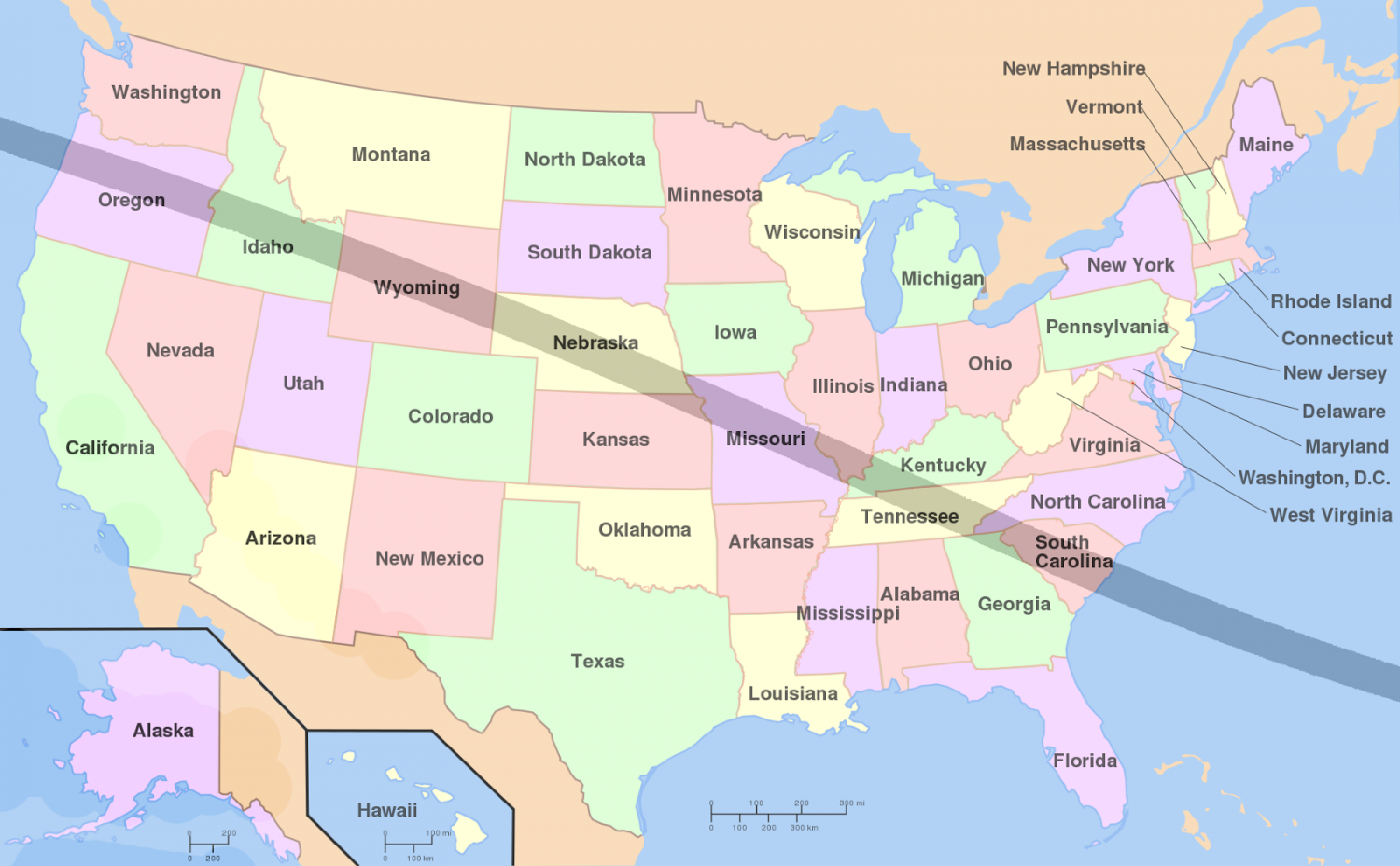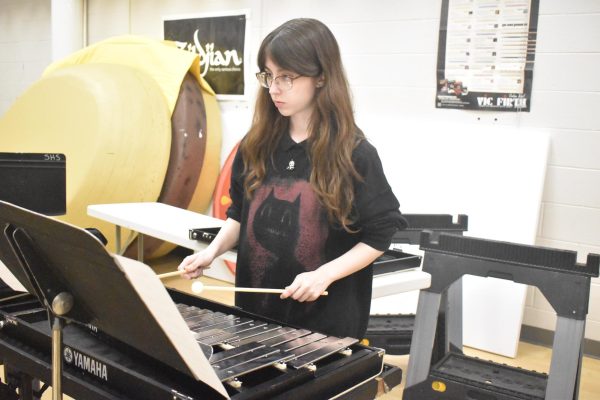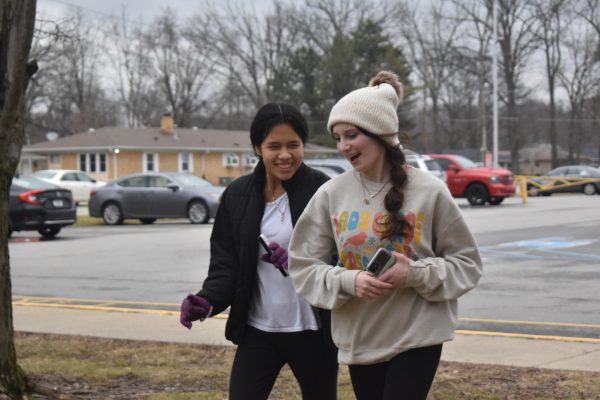The Ultimate Guide to a Solar Eclipse Q & A
On Aug. 21, 17 U.S. states will be able to experience a total solar eclipse. Here, a shaded line represents where each of the 17 U.S. states will be able to see the total solar eclipse.
August 11, 2017
On Monday, Aug. 21, 17 states in America will undergo one of nature’s most unique phenomenons; a total solar eclipse, according to NASA’s Associate Director of Science, Alex Young.
“That’s what makes this one so amazing. It is going over the U.S.,” Young said.
From L.A. to Washington D.C., every city in the U.S. will have the opportunity to experience a partial solar eclipse. The last time an eclipse cast over the U.S. was over a century ago, which is what makes this one special to researchers across the country. Many scientists have been preparing for this event for years and have used their findings to predict and prepare for this day. The following is a guide to help ensure the best experience.
Q: What is an eclipse?
A: “(An eclipse is where) the sun and the Earth line up, and the shadow of the moon is cast onto the Earth,” Claire Raftery, Head of Education and Outreach for the National Solar Observatory, said.
Usually, the moon is either above or below the sun, according to Young, and roughly every 18 months, the moon lines up with the sun.
“When that happens, over a several hour period, at certain locations on the Earth, the moon slowly moves in front of the sun, blocking it out,” Young said. “There is a brief moment where the moon completely blocks out the bright disc of the sun.”That is called totality.
Q: What is totality?
A: Totality is the short amount of time when the entire sun is covered by the moon.
“In fourteen states, along a very narrow path, (there) will be 70 miles long but 3,000 miles wide from coast to coast, (Americans) will see totality. They will actually be within the shadow of the moon. The cone extends 240,000 miles through space, and just barely makes it touching the Earth,” American Astronomical Society Solar Eclipse Task Force Manager, Mike Kentrianakis said.
Q: How can one watch the solar eclipse?
A: Unfortunately, Indiana is not in the path of totality, so residents will not be able to see the total solar eclipse. However, Shawneetown, KY, which is just a few hours away, is. Many people will be traveling to witness this event, according to Raftery.
The partial solar eclipse will be from 12:57 p.m. to 3:58 p.m. in Indianapolis. As long as you have a clear view of the sky, where you are will not affect your view of the eclipse.
Capturing the eclipse can be very tricky due to low quality phone cameras, but professional photographer, Stan Honda, suggests creating a timelapse on a viewer’s smartphone to record the event.
Q: What impact will the eclipse have?
A:“It will decrease the amount of light, the temperature, and even some animals will respond,” Young said. “This is a chance to study the sun, moon, the atmosphere, and even the responsive animals. This is a way to connect with nature and the universe.”
We can not control the sun nor the moon, so nothing is for sure. However, science has accurately made predictions for thousands of years, but nothing 100 percent, according to Raftery.
“No matter what, we will be able to collect some very cool data from it,” Raftery said.
All three scientists agree that everyone should take advantage of this opportunity to witness this event.
“It is probably the most beautiful natural phenomenon you can see. It is a unique opportunity that the sun has given us,” Kentrianakis said.
“The fact that it is almost here is really wonderful. People have already started to compare it to the moon landing with the number of people who are interested and excited about it,” Raftery said. “I think it has the opportunity to have a lasting effect on the American public.”








